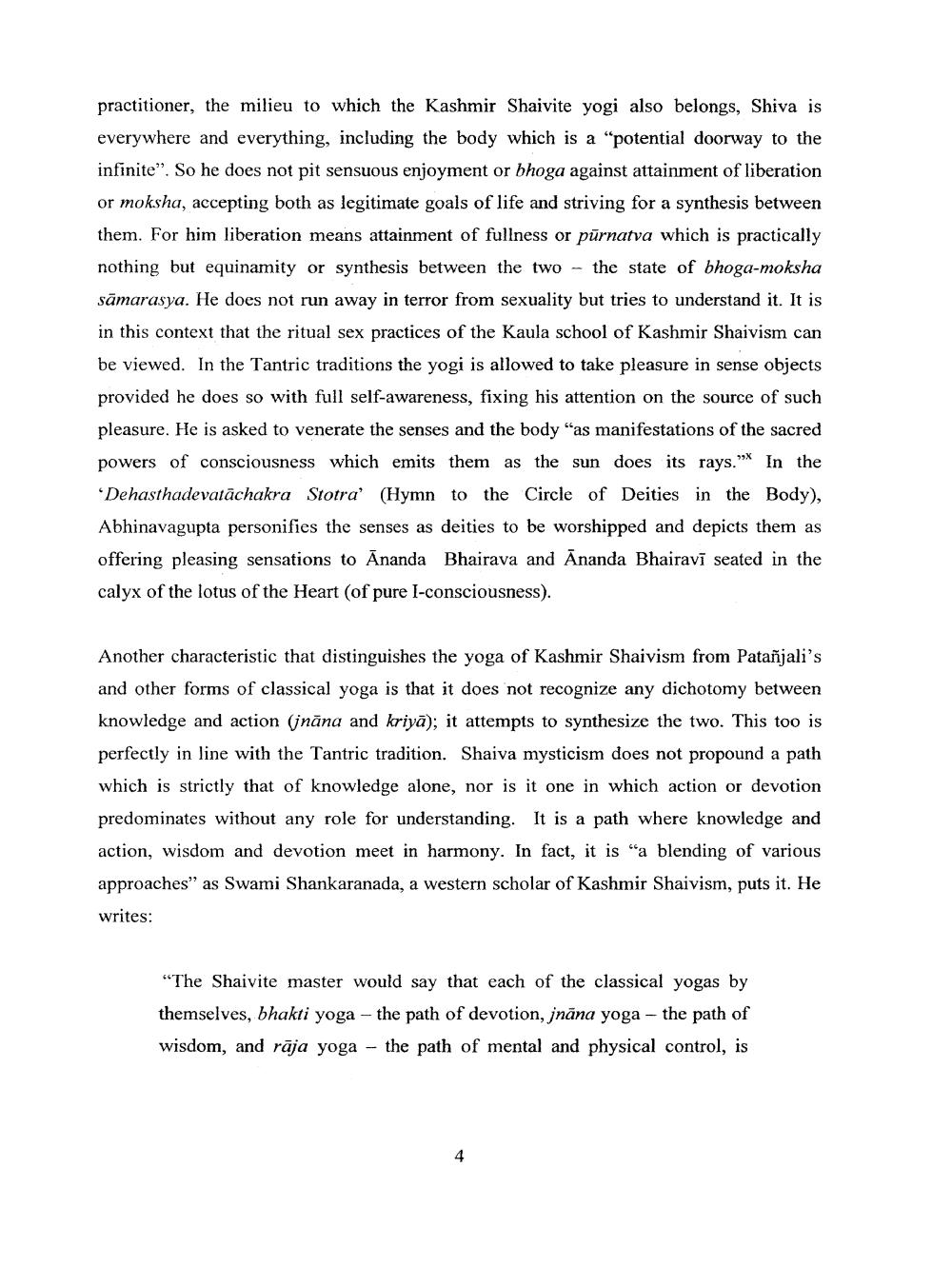Book Title: Yoga of Synthesis in Kashmir Shaivam Author(s): S S Toshkhani Publisher: S S Toshkhani View full book textPage 4
________________ practitioner, the milieu to which the Kashmir Shaivite yogi also belongs, Shiva is everywhere and everything, including the body which is a "potential doorway to the infinite". So he does not pit sensuous enjoyment or bhoga against attainment of liberation or moksha, accepting both as legitimate goals of life and striving for a synthesis between them. For him liberation means attainment of fullness or pūrnatva which is practically nothing but equinamity or synthesis between the two - the state of bhoga-moksha sāmarasya. He does not run away in terror from sexuality but tries to understand it. It is in this context that the ritual sex practices of the Kaula school of Kashmir Shaivism can be viewed. In the Tantric traditions the yogi is allowed to take pleasure in sense objects provided he does so with full self-awareness, fixing his attention on the source of such pleasure. He is asked to venerate the senses and the body "as manifestations of the sacred powers of consciousness which emits them as the sun does its rays."* In the 'Dehasthadevatāchakra Stotra (Hymn to the Circle of Deities in the Body), Abhinavagupta personifies the senses as deities to be worshipped and depicts them as offering pleasing sensations to Ananda Bhairava and Ananda Bhairavī seated in the calyx of the lotus of the Heart (of pure l-consciousness). Another characteristic that distinguishes the yoga of Kashmir Shaivism from Patañjali's and other forms of classical yoga is that it does not recognize any dichotomy between knowledge and action (jnāna and kriyā); it attempts to synthesize the two. This too is perfectly in line with the Tantric tradition. Shaiva mysticism does not propound a path which is strictly that of knowledge alone, nor is it one in which action or devotion predominates without any role for understanding. It is a path where knowledge and action, wisdom and devotion meet in harmony. In fact, it is "a blending of various approaches" as Swami Shankaranada, a western scholar of Kashmir Shaivism, puts it. He writes: "The Shaivite master would say that each of the classical yogas by themselves, bhakti yoga - the path of devotion, jnāna yoga - the path of wisdom, and rāja yoga - the path of mental and physical control, isPage Navigation
1 2 3 4 5 6 7 8 9 10 11 12 13 14 15 16 17 18 19 20 21 22 23 24 25 26 27 28 29 30 31 32 33 34 35 36 37 38 39 40 41 42 ... 46
